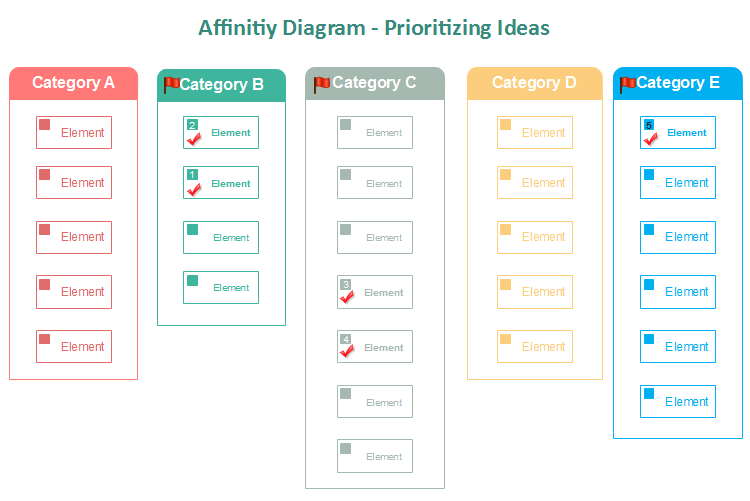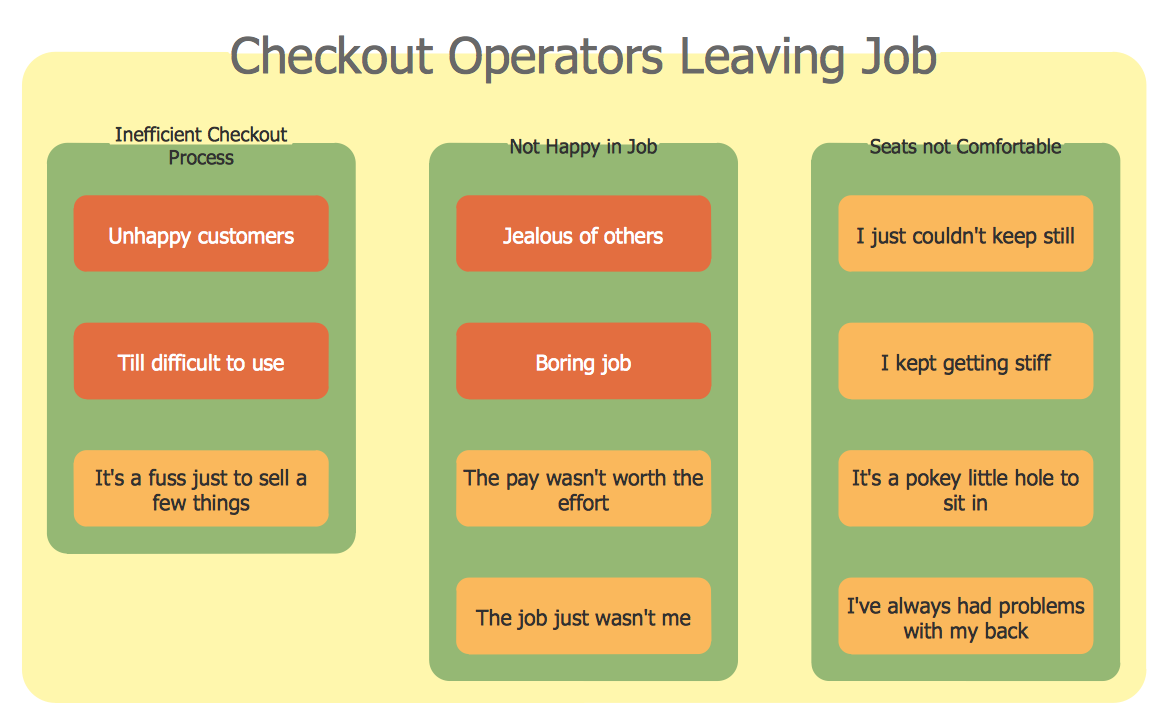

#Affinity diagrams how to#
How to create an affinity mapĪffinity mapping has three basic steps. Any time you have a bunch of data points or ideas and need to distill them down, affinity maps are a fantastic tool to have at your disposal.

You can use it to better understand users and their needs, to define product requirements, or to plan future product features. Because it’s all about extracting insights and noticing themes, affinity mapping is especially useful in strategic phases of the design lifecycle-particularly the empathize and ideate stages. Affinity mapping for synthesizing researchīefore we get into the mechanics of it, let’s take a minute to think through when and why affinity mapping can be useful to you.Then we’ll walk through what it looks like in two common use cases: pulling out insights from research notes and organizing design ideas. In this article, I’ll first explain why and how affinity mapping fits into the UX process. These groupings can help you extract insights and themes to help you build effectively toward next steps. In a nutshell, affinity mapping is putting a bunch of sticky notes with ideas on them on a wall and then grouping them based on their similarities (affinities). If you’ve ever seen a photo of a bunch of designers standing in front of sticky notes on a wall, an affinity map is what you were probably looking at.

One of the classic tools in the UX designer’s toolbox is an affinity map (sometimes called an affinity diagram).


 0 kommentar(er)
0 kommentar(er)
